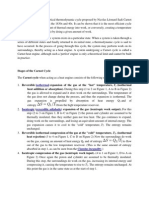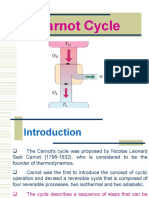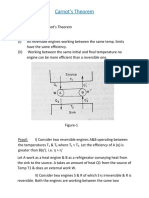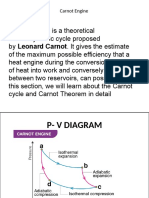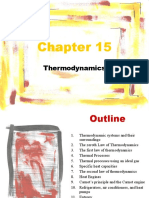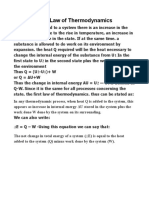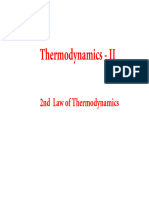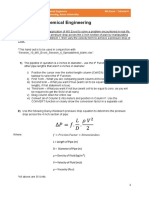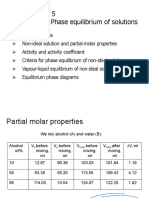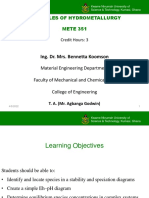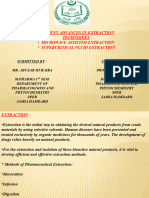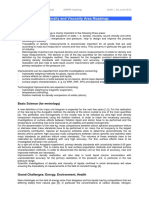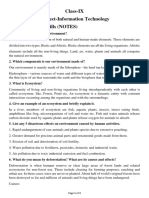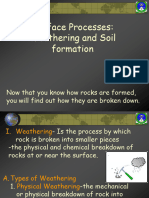0% found this document useful (0 votes)
107 views43 pagesLecture Week 6 PDF
The document discusses the Carnot cycle and Carnot engine. It begins with an overview of basic thermodynamic concepts like state functions, path functions, and the first law of thermodynamics. It then describes Nicolas Carnot's idealized heat engine and the four processes that make up the Carnot cycle: 1) adiabatic compression, 2) isothermal expansion, 3) adiabatic expansion, and 4) isothermal compression. The net work done by the system during the cyclic process equals the heat absorbed from the warm reservoir minus the heat rejected to the cold reservoir.
Uploaded by
fCopyright
© © All Rights Reserved
We take content rights seriously. If you suspect this is your content, claim it here.
Available Formats
Download as PDF, TXT or read online on Scribd
0% found this document useful (0 votes)
107 views43 pagesLecture Week 6 PDF
The document discusses the Carnot cycle and Carnot engine. It begins with an overview of basic thermodynamic concepts like state functions, path functions, and the first law of thermodynamics. It then describes Nicolas Carnot's idealized heat engine and the four processes that make up the Carnot cycle: 1) adiabatic compression, 2) isothermal expansion, 3) adiabatic expansion, and 4) isothermal compression. The net work done by the system during the cyclic process equals the heat absorbed from the warm reservoir minus the heat rejected to the cold reservoir.
Uploaded by
fCopyright
© © All Rights Reserved
We take content rights seriously. If you suspect this is your content, claim it here.
Available Formats
Download as PDF, TXT or read online on Scribd
/ 43








